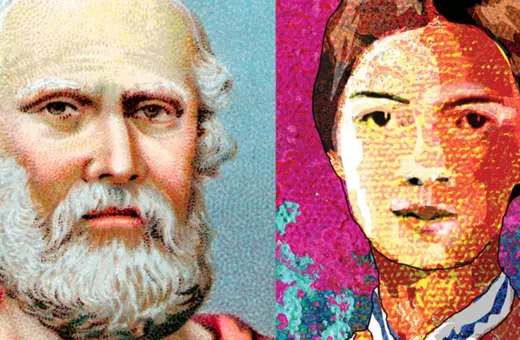At least since the appearance of Marcel Duchamp’s fountain, gallery audiences have been plagued by the question: why is this art? The problem originates in people’s adoption of an 18th century understanding of art as beautiful, pleasing to the senses and the intellect. From that perspective, most contemporary artworks fail to even count as art. But according to a different line of thought, starting with Plato and continuing in Hegel, art is the embodiment of meaning, and contemporary art fulfills that criterion in spades, writes Jonathan Loesberg.
A number of recent artworks, most famously, perhaps, Banksy’s shredded painting (first named “Girl With a Balloon, but renamed, post-shredding, “Love is in the Bin”) and Maurizio Cattelan’s “Comedian” (almost always identified by its description, banana taped to a wall), have re-raised the issue of what constitutes an artwork, and, more to the point, what people are buying when they buy it.
This question, of course, has kept recurring for more than a century with the appearance, and prompt disappearance, of Marcel Duchamp’s “Fountain,” the mounted urinal, in 1917. Then, of course, Andy Warhol created multiple copies of “Brillo Box”, and conceptual art became an art movement. The problem of why these works are artworks might be one that has been plaguing audiences since Duchamp’s “Fountain,” but ultimately it’s a philosophical question, and one that only aesthetic theory can answer.
To do this in needs to turn away from questions of judgment and evaluation and focuses on the question of definition. In other words, instead of confusing the issue of whether an object is an art object or not with the question of whether it is a good artwork (by using beauty as a criterion both of definition and of evaluation), it asks simply what makes an object an art object. Works such as Duchamp’s and Catellan’s obviously aren’t beautiful in any traditional way since, as we will see, they do not really exist as material objects of any kind. Once we understand why they are art objects, though, we can at least interpret how they work as such objects.
___
The root of the problem seems to be that most art critics and most of the audience operate under one definition of what art is, while the artists are operating under another.
___





















Join the conversation